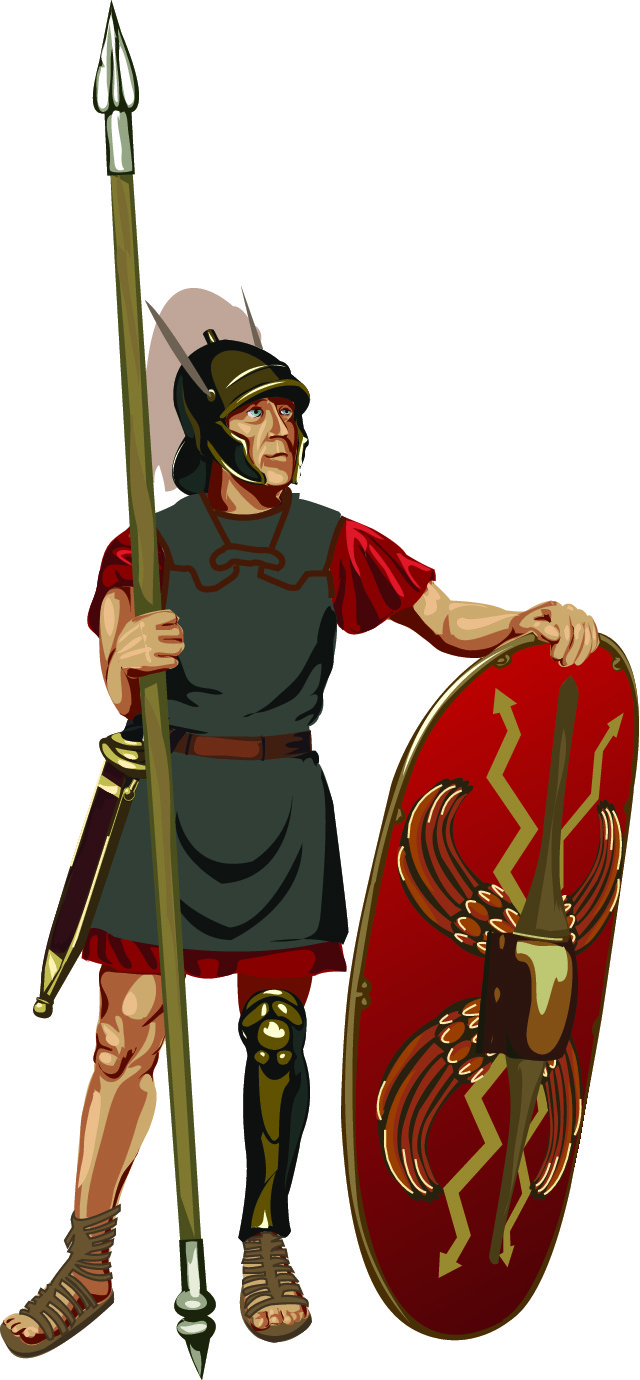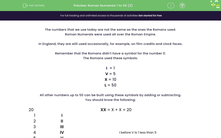The numbers that we use today are not the same as the ones the Romans used.
Roman numerals were used all over the Roman Empire.

In the United Kingdom, they are still used occasionally, for example, on film credits and clock faces.
Remember that the Romans didn't have a symbol for the number 0.
The Romans used these symbols:
I = 1
V = 5
X = 10
L = 50
C = 100
All other numbers up to 100 can be built using these symbols by adding or subtracting.
You should know the following:
| 1 | I | |
| 2 | II | |
| 3 | III | |
| 4 | IV | I before V is 1 less than 5 |
| 5 | V | |
| 6 | VI | I after V is 1 more than 5 |
| 7 | VII | II after V is 2 more than 5 |
| 8 | VIII | III after V is 3 more than 5 |
| 9 | IX | I before X is 1 less than 10 |
| 10 | X | |
| 11 | XI | I after X is 1 more than 10 |
| 12 | XII | II after X is 2 more than 10 |
We build bigger numbers by adding 10s or Xs in Roman numerals.
| 20 | XX | = X + X = 20 |
| 21 | XXI | = XX + I = 20 + 1 |
| 30 | XXX | = X + X + X = 30 |
| 37 | XXXVII | = XXX + VII = 30 + 7 |
| 40 | XL | = X before L is 10 less than 50 or 50 - 10 = 40 |
| 48 | XLVIII | = XL + VIII = 40 + 8 = 48 |
| 49 | XLIX | = XL + IX = 40 + 9 = 49 |
| 50 | L |
Example
Convert the number 46 to Roman numerals.
Answer
46 = 40 + 6 = XL + VI = XLVI
Let's have a go at some questions now.
Remember that you can check back to this page at any point by clicking on the red help button on the screen.









